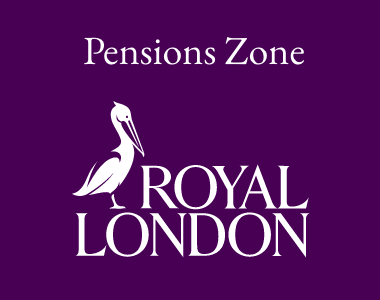Rachel Vahey, head of public policy at AJ Bell, reflects on the Pension freedoms as they hit their 10 year anniversary, with an estimated seven million pension pots accessed flexibly due to the landmark reforms*.
This month we light the candles on the cake celebrating 10 years of pension freedoms. George Osborne’s 2014 Budget bombshell was a dramatic initiative which ripped up the rulebook and gave people more control over how they access their pension savings.
In the biggest pensions shake-up in a generation, government relaxed some rules around drawdown from 2014, going on to open up choice on how to access pensions in April 2015 and launching a retirement revolution in the UK that has utterly transformed the market.
A decade later, we can see the choices people made with their new-found freedom. Drawdown has surged in popularity to become by far the most popular retirement choice among those with pots of £30,000 or more.
Last year 60% of all those pension pots in excess of £30,000 used drawdown, while a further 8% used uncrystallised funds pension lump sum (UFPLS) payments, another form of flexible income payment. Among those with £100,000 or more in their pension pot, the vast majority opted for flexible income through either drawdown (73%) or UFPLS (9%), while just 15% purchased an annuity last year.
Annuity sales nose-dived following the reforms. Some 75% of defined contribution pensions were used to buy an annuity before 2015**, falling to just 17% of pots worth over £30,000 last year and just 10% of all pots accessed since 2015. And whilst sales of annuities in the last 12 months have rallied, they are unlikely to match the number of people choosing drawdown.
Among those with smaller pension pots worth less than £30,000, full encashment is a common choice. Around 55% of pension pots have been fully encashed since 2015, although the vast majority (90%) were small pots worth less than £30,000.”
Withdrawal rates
Contrary to worries at the time, there is little evidence people rushed out to ‘blow’ their entire pension pot on luxury items like Lamborghinis. Instead, the FCA evidence shows those with larger pension pots are making sensible decisions using drawdown and annuities to make sure they have a decent income in retirement.
The most popular option in 2023-24 was to take income at a withdrawal rate of 8% or over. While there may be valid reasons for taking income at above 8% – people taking their income solely from one pot whilst leaving others untouched, for example – others might need more support to understand the consequences of their actions.
However, those drawing down pensions at over 8% largely reflects the number of small pots drawn down relatively quickly, with the average withdrawal rate falling to more moderate levels from larger pension pots.
Among those with £100,000 or more in their pension pot, 65% withdrew less than 6% income last year, with 44% taking under 4%.
Small pots under scrutiny
The data shows that full encashment has become a common option for those with pots of under £30,000. Before the pension freedom reforms there was very little opportunity to fully encash pension pots.
Pension freedoms allowed those with modest pension pots – many people will build up multiple small pension accounts during their lifetime – to fully encash the account rather than leave them to set up multiple small annuity income payments in retirement.
However, there might be a better approach than cashing in small pension pots. Some people may find combining pensions more beneficial. Combining several smaller pots to form a larger one could give them more options and reduce charges, potentially producing a bigger income in retirement. The Pensions Dashboard, once launched, will be massively helpful here, showing people all their pension pots in one place and kickstarting conversations on consolidation.
The number of people relying mostly on defined contribution pensions for their later life income is soaring, as defined benefit pensions become the preserve of a lucky few. As we enter the next decade of pension freedoms, making sure these people are supported in their retirement decisions is paramount. People face tough decisions on how to secure a retirement income, and how much to take and when.
The introduction of targeted support will be a game changer, shaping the narrative for the next 10 years. Deciding on a robust income strategy is challenging, and more personalised guidance can help people understand their options, nudge them to act, and encourage more to seek regulated advice.
10 years of pensions freedoms – what have people done?
FCA retirement income market data paints a picture of what people have chosen to do when accessing their pension pot for the first time in the 10 years since pension freedoms were introduced.
- The number of pension plans accessed has remained broadly unchanged over the decade of pension freedoms. However, over the last three tax years the number of pots has started to increase – there was an almost 20% increase in pension pots accessed in 2023-24 compared to the previous tax year. This is probably a consequence of the cost-of-living crisis hitting some retirees hard, driving them to access pension savings to help them financially.
- Most pension pots are fully encashed. Around 55% of pension pots accessed each tax year are fully cashed in. Over the last 10 years, AJ Bell estimates over 3,831,000 pension pots will have been fully cashed in^.
- Moving into drawdown has been three times more popular than buying an annuity. Over the eight years we have data for, 560,000 pots have been used to buy an annuity, compared to over 1.6 million pots moved into drawdown. This shows pension savers have appreciated the flexibility pension freedoms have given them to set the income they need to meet their needs.
- The majority of smaller pension pots were fully cashed in. In 2023-24, 90% of all pots cashed in were valued at £30,000 or less. People may be cashing in their smaller pots and instead relying on larger pension pots or defined benefit pensions for income in their retirement.
- The larger the pension pot the more likely people are to move it into drawdown. Drawdown was the most popular option for pension pots worth £30,000 or more. Over 80% of the largest pots worth £250,000 or more were moved into drawdown in 2023-24.
*Source: AJ Bell/FCA retirement income market data – September 2024
**Source: HMT, Freedom and Choice in Pensions
^Assuming the same number of pension pots are encashed in 2024-25 as were in 2023-24.
The potted history of pension freedoms
Before pension freedoms
After taking their tax-free cash, pension savers could buy an annuity or go into drawdown (now called capped drawdown). There was a maximum amount they could withdraw which was 120% of the Government Actuary’s Department (GAD) rate – this was roughly equal to the level single life annuity that could be bought with the fund. If they took more than this amount, then 55% tax would apply to the excess amount. This limit would be reviewed every three years if the person was under 75 and yearly after that.
Or the pension saver could take out flexible drawdown. This allowed pension savers to make unlimited withdrawals from their pension pot if they had a guaranteed income of £20,000 a year (before tax).
27 March 2014: Budget 2014
- Chancellor George Osborne announces sweeping pension freedom reforms, giving defined contribution pension savers more control over how to access their pension pots from age 55.
- He famously said: “Pensioners will have complete freedom to draw down as much or as little of their pension pot as they want, anytime they want. No caps. No drawdown limits. Let me be clear. No one will have to buy an annuity.”
- There were some immediate changes to the rules:
- The maximum that could be withdrawn from capped drawdown plans went up from 120% to 150% of the GAD rate.
- The guaranteed income a pension saver needed to be receiving to take flexible drawdown reduced from £20,000 to £12,000 a year (before tax).
- The trivial commutation minimum increased from £18,000 to £30,000.
6 April 2015: pension freedom reforms implemented
- The key changes take effect:
- A new option of flexi-access drawdown is introduced for how pension savers can take their income. Pension savers can withdraw as much or as little as they want (those in flexible drawdown immediately convert to flexi-access drawdown).
- Another new option of uncrystallised funds pension lump sum (UFPLS) is also introduced, allowing individuals to take ad-hoc lump sums where 25% will be tax-free and the rest taxed as income.
- Pension Wise launches to offer free, impartial guidance for those accessing pensions.
6 April 2015: introduction of the ‘money purchase annual allowance’ (MPAA)
- This is a new allowance on contributions if an individual has already ‘flexibly accessed’ their pension. The MPAA was set at £10,000 (later reduced to £4,000 in 2017 and then increased back up to £10,000 in 2023) to prevent pension recycling (taking money out and reinvesting it for further tax relief).
January 2019: ban on pension cold calling introduced
- Cold calling related to pensions is made illegal, with firms facing fines of up to £500,000.
2019-2022: FCA and The Pensions Regulator (TPR) introduce further consumer protection measures
- November 2019: FCA introduced changes to the frequency and content of ‘wake-up’ packs sent to pension savers approaching retirement.
- February 2021: FCA introduces Investment Pathways. Providers must offer those entering drawdown four investment pathways based on retirement goals to help those who don’t take financial advice.
- November 2021: TPR introduces new rules for pension schemes to flag where they have concerns about transfers, and either stop the transfer or ask the pension saver to attend an appointment with Pension Wise.
- June 2022: stronger nudge to pension guidance. Pension providers are required to “nudge” consumers towards taking Pension Wise guidance before accessing their pensions.
Main image: caitlyn-de-wild-sxIVqaksdfE-unsplash





























